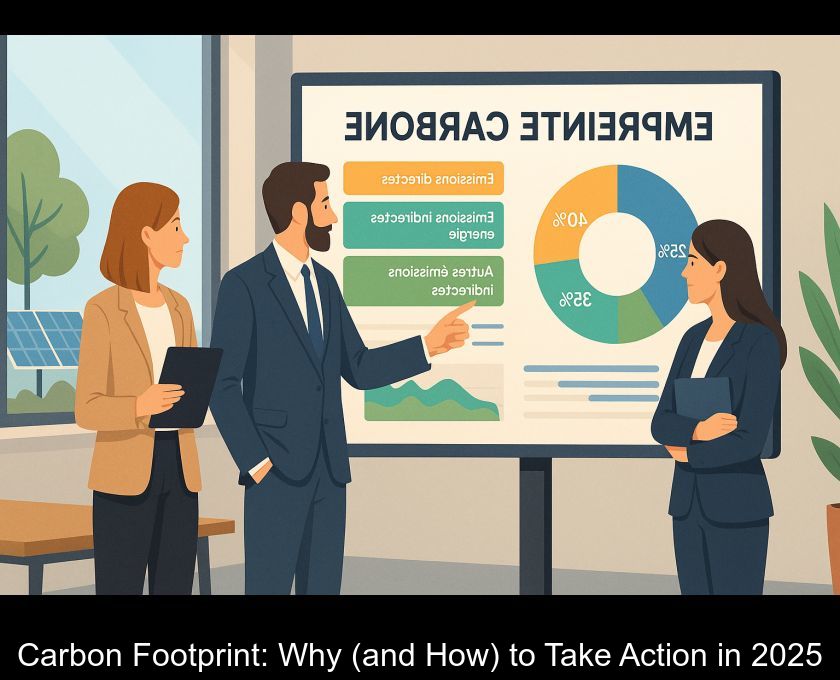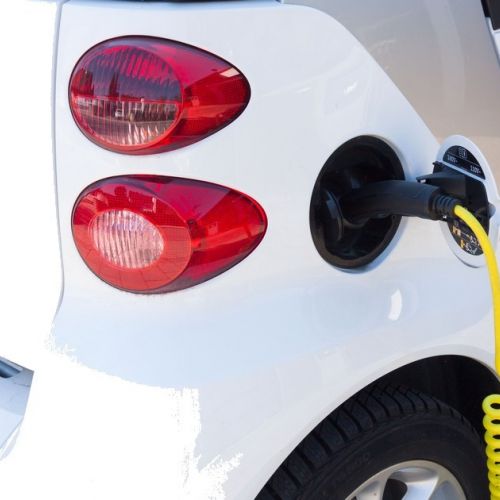Carbon Footprint: Why (and How) To Take Action In 2025
CO2 emissions have once again reached 37.4 billion tons in 2023, a somber record that underscores the urgency to act. But to take action, one must first measure. The carbon footprint has now become the essential tool, and soon mandatory, for all organizations that want to remain credible, competitive... and simply sustainable. Here is, in clear language, what you need to know before getting started.
Carbon Footprint: What Exactly Are We Talking About?
Invented in the early 2000s by the ADEME, the carbon balance consists of accounting for all greenhouse gases (GHG) emitted, directly or indirectly, by an activity, a product, or a territory.
Three scopes are distinguished:
Scope 1 (direct emissions, for example, the gas boiler),
Scope 2 (purchased electricity and heat), and
Scope 3 (everything else: suppliers, travel, end-of-life of products, etc.). This last category, often underestimated, can represent up to 90% of the total footprint of a company! (Yes, 90%... that's huge.)
A key tool in addressing the climate emergency
Globally, emissions continue to rise: +1.1% in 2023 despite the growth of renewable energies. In France, the average footprint remains around 9 t CO2e per capita, far from the target of 2 t by 2050.
In other words: as long as we do not know where (and why) we emit, it will be impossible to seriously reduce our carbon footprint.
The carbon assessment thus serves to objectify the discussion: with figures to support it, it highlights the main sources of emissions and prevents intuition-based "greenwashing".
Businesses: A Tightening Regulatory Framework
We're no longer just talking about goodwill: the law is changing. In France, any entity with more than 500 employees (250 in overseas territories) must already publish a comprehensive GHG (greenhouse gas) report every four years (Article L.229-25 of the Environmental Code).
And Europe is making progress: the CSRD (Corporate Sustainability Reporting Directive) extends the requirement for non-financial reporting to 50,000 companies starting from the 2024 fiscal year (report published in 2025). In short: if you're not affected yet, you will be very soon.
How to conduct your carbon footprint step by step?
1. Define the scope: legal entity, sites, subsidiaries… (Better to cast a wide net than to be rejected later on.)
2. Collect data: energy consumption, purchases, freight, travel, waste, etc. Spoiler: Scope 3 often requires a (significant) effort in information hunting.
3. Convert to CO2e: apply official emission factors (ADEME Carbon Footprint Database, GHG Protocol).
4. Analyze: categorize items, identify quick wins and major projects.
5. Build an action plan: energy frugality, responsible purchasing, eco-design, mobility, etc.
6. Publish and communicate, with full transparency (otherwise, beware of backlash).
All this can be done internally (if you have the time, the data, and the expertise) or with a specialized partner like Greenly, which automates data collection, applies the right methodologies, and provides a clear dashboard, ready to be presented to the executive committee (and to the banker, while you're at it).
How much does it cost... and how much can it bring in?
Taboo question? Not really. A comprehensive diagnosis typically ranges between €3,000 and €30,000 depending on the size and complexity. However, the financial and reputational gains are far from negligible:
- **Energy**: up to **20% savings** by optimizing consumption (return on investment in less than two years at some industrial sites).
- **Purchasing**: rationalization of suppliers, reduction of express transport, negotiated volumes.
- **Financing**: easier access to green loans (Bpifrance, Crédit Agricole, etc.) and public tenders incorporating a carbon score.
- **HR**: strengthened employer brand, retention of "climate-compatible" talents (it counts!).
Let's add that the French government is multiplying **ecological transition aids**: "green industry" tax credit, heat funds, ADEME Green Loan, regional subsidies... All of which can help offset the entry fee for SMEs.
Choosing the Right Partner: Focus on Greenly
Among the many platforms on the market, Greenly stands out as a pioneer (and a benchmark). Its software connects to ERPs, accounting systems, energy bills, vehicle fleets... and produces a GHG Protocol-compliant diagnostic in just a few clicks. (Yes, it's kind of magical.) Even better: the solution provides detailed recommendations, tracks progress, and generates the CSRD report in the expected format. For overwhelmed CSR teams, it's a significant time-saver... and one less risk.
Go Further: Reduce, Offset, Communicate
A carbon footprint is not an end in itself: it's the starting point for a solid climate strategy. The logical next steps?
- Reduction: prioritize the most emitting items (often: purchases of raw materials, upstream/downstream transport, product use).
- Substitution: switch to renewable energies, recycled materials, eco-design.
- Compensation: fund certified projects (reforestation, methanization, clean energies) to neutralize the residual, only after having reduced as much as possible.
- Responsible communication: share progress without overselling (greenwashing can be costly).
Experience shows that an SME following this trio "measure, reduce, compensate" can lower its footprint by 30% in three years, while realizing substantial energy savings. Proof that ecology and competitiveness are no longer sworn enemies.
Nota Bene
Scope 1, 2, 3: these terms come from the GHG Protocol, the international standard for carbon accounting. Scope translates to "perimeter". Remember: Scope 1 = direct, Scope 2 = energy, Scope 3 = value chain.
CSRD vs. NFRD: the CSRD replaces the NFRD and drastically expands the number of companies required to publish non-financial data, with a unique standard (ESRS) and a mandatory limited assurance.
Value chain: this refers to the entire ecosystem surrounding the company, from raw materials at suppliers to end-of-life product treatment at customers, in other words, the upstream and downstream of your activity where the majority of Scope 3 emissions are hidden.
Conclusion: Measure to Better Transform (Ourselves)
The carbon footprint is no longer a "bonus". It's the new passport for taking, and proving, one's part in the fight against climate change. By 2025, your customers, investors, and employees will demand it anyway. Might as well get ahead, right? After all, it's better to count your emissions... than your regrets.











